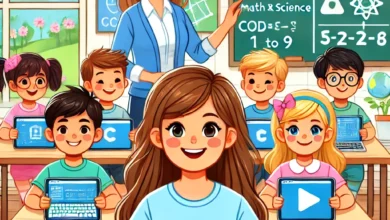Distance Learning or Online Learning
In this day and age, online learning is a popular topic, with millions of dollars being invested in new technologies such as the Internet, with the idea that education at all levels will be revolutionized. Newspapers now contain Internet-related feature sections, and self-help books on technology-related topics are becoming increasingly popular. An increasing number of adult and continuing education programs are striving to become players in the new world of global technology.
Many of the conversations appear to be centered on the impact of technology on online learning provision; nevertheless, it is possible that these talks are more reflective of the past than they are predictive of the present. Increased use of the Internet for educational purposes is being seen as a positive development, as more and more students are choosing to study for their degrees online, a process that is now a multibillion-dollar global industry known as online learning. In a word, online learning may be defined as any combination of educational approaches that are delivered using digital tools.
Students may learn more quickly and at a reduced cost thanks to online learning, which was developed with this in mind. History has shown that the primary use of online learning technologies has been to provide access to classroom education in rural or remote areas of the world. Adult online learning programs, for the most part, have done so with high degrees of success even before the Internet or computer networks were economically feasible. Overall, it is clear that online learning programs have outperformed their expectations in terms of providing adults living in rural and remote areas with access to educational opportunities. Courses are available for delivery at any time of day or night, seven days a week. The student can access online lessons from any location where the Internet is accessible.
Digital tools, which may be utilized to enhance the learning experience, can be incorporated into distance education organizations. Is offering access to a traditional classroom sufficient justification for increasing investments in new technologies such as desktop video conferencing and the Internet, on the other hand? Is the purpose just to build a better mousetrap or something more complex? By simply improving current broadcast and cable systems, we can significantly improve the quality of our existing online learning programs on a budget. On the contrary, the advent of new technologies allows us to shift our attention away from the delivery of classroom-based instruction and toward the distribution of new resources and the support of new modes of learning. Online learning, sometimes known as e-learning, was introduced for the first time in 1998. The need to reduce costs associated with traditional classroom learning, the need to train a large number of employees at the same time, and the need to improve training effectiveness by narrowing it down to individual learning were the driving forces behind the development of eLearning. It is possible that the use of technology to develop new models of adult learning will have an impact on the adult education delivery system.
Adult education programs will evolve from being merely places to learn to becoming hubs of learning. This implies that formal classroom-based instruction will be deemed archaic and will be phased out in favor of other methods. It is possible that the number of classroom-based instructional settings will expand as more adults are required to meet educational requirements in new environments. Adult education classes that provide face-to-face interactions may soon be available to those who have never considered entering an adult education program through the front door before. They will realize their educational needs, become motivated to learn, and then choose to participate in adult education classes that provide face-to-face interactions. Distance learning has proven to be effective in meeting all three of these requirements. It is a relatively new industry, having only been in existence for a few short years.
From an information technology standpoint, online learning appears to be a more successful method of learning than traditional methods in a variety of aspects, which will be described further below. Our ability to successfully transition from the familiar model of online learning to the future model of remote learning will be determined in part by our assumptions and preparations that we make at this point in time. We can start to identify and plan for what we want to happen in the future. We must take the initiative in order to have an impact on the future. If we sit back and do nothing, we will find ourselves in the position of having to adjust to rapidly changing technology and learning settings that will be imposed upon us. It has been anticipated that, as a result of online learning, software will migrate from hard drive applications to Internet services, resulting in the delivery of interactive products online and the updating of existing software online on a daily basis.
Additionally, purchasing school supplies will be done online for the sake of efficiency and cost reduction. Learners will also improve their learning and technical abilities as a result of their studies. Traditional classroom-based approaches of online learning will be strengthened rather than eliminated as a result of new technological developments. Although classroom-based forms of online learning will evolve, they will continue to play an important and viable role in the future. Formal learning will be enhanced by the use of new technology. In order to assist them in developing their own learning paths, students will have access to Internet-based resources. It will be usual for learners to create and author their own learning experiences. In the past, teachers, let alone adult learners, were unable to personalise their learning because they lacked the necessary resources. Access to learning resources will be considerably expanded through the use of networking technologies such as the Internet and multimedia databases on a scale previously unattainable in adult education.
Distance learning will, to some extent, be about tailoring instruction to the needs of individual students. Despite its relative youth, online education has had a significant impact on society. Between now and 2003, the cumulative annual growth rate for online education is predicted to be around 80% every year, according to projections. Universities have been able to save significant sums of money by incorporating distance learning into their programs. Instructors will transition from being transmitters of knowledge to facilitators of learning. Recent research has revealed that advanced skills are acquired not through the transmission of facts, but rather through the interaction of the learner with the content. Learners learn more effectively when they construct their own meaning from information by creating, building, and interacting with it. The impact that online learning has had can be viewed in either a favorable or bad light, depending on the perspective of the individual.
For a variety of reasons, I believe that this has a favorable impact. Because students learn more quickly and efficiently than in a traditional classroom setting, there will be a huge number of confident and qualified employees when they have completed the course, to name a couple of examples. The future of learning will be about bridging the gap between the classroom and the world of work and home. New technologies can provide those critical connections, ensuring that learning is relevant and that skills learned in one environment can be transferred to other settings as needed. The importance of collaborative learning will be emphasized. The majority of adult education focuses on individual achievement and problem-solving skills that do not require the assistance of others. Collective issue solving is not an exception, but rather the norm in the world of work and personal relationships. Collaborative learning focuses on processes rather than isolated themes or one-word replies, which are common in traditional learning.
With the emergence of collaborative computing, adult learners from many locations can come together on the internet to collaboratively solve problems at any time and from any location at any given time. Staff development and teacher training will need to be constant and on-going throughout the organization. Meeting the demand for continual on-going technology through traditional staff development approaches such as seminars and conference presentations will not be possible with traditional methodologies. It will be necessary to establish new ways of continual improvement as well as training. Technology will assist, but it will be necessary to make staff development readily available. To plan for the future of distant learning, it is necessary to consider how learning should develop to keep up with the demands of a changing environment. Distance learning will only be successful if it is based on sound educational principles rather than being driven solely by technological advancements. Technology will be a strong instrument that we will use to renew ourselves, reflect on our actions, and develop ourselves on a continuous basis. The fact that it exists will not, by itself, establish a learning community consisting of thousands of teachers and learners interacting and borrowing resources while also creating and providing new resources. That can only be accomplished by those who have ideas.


